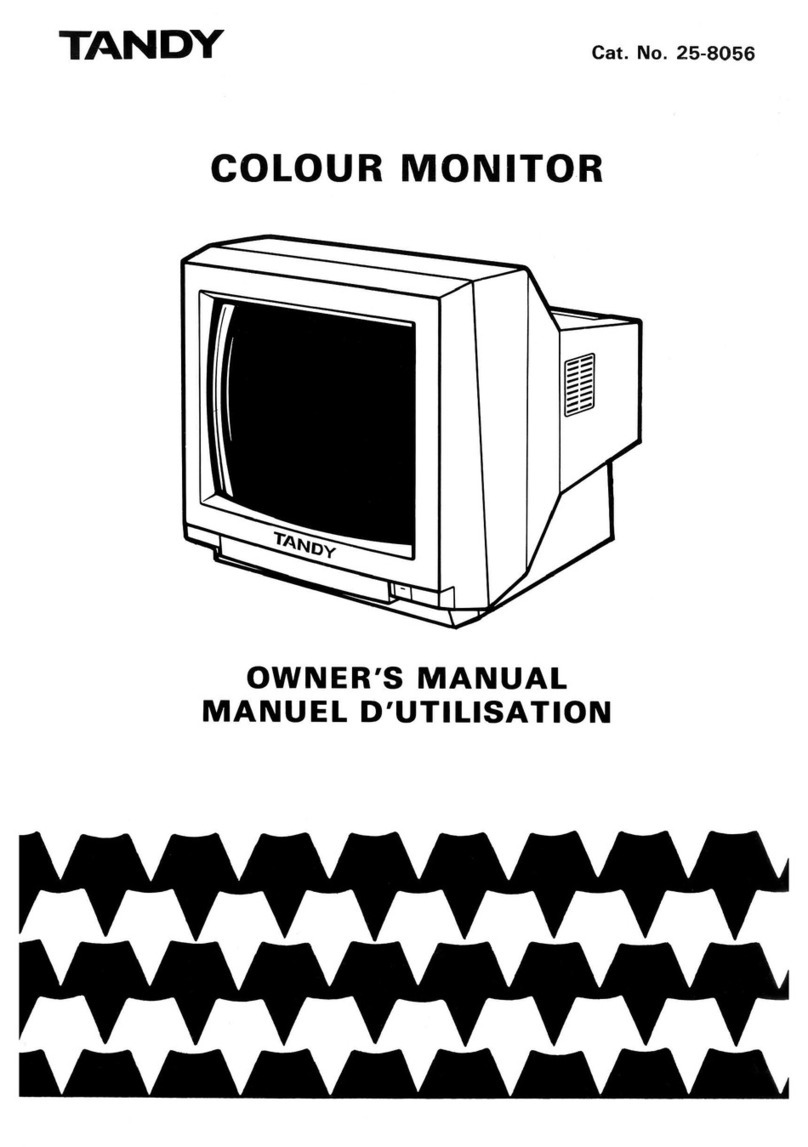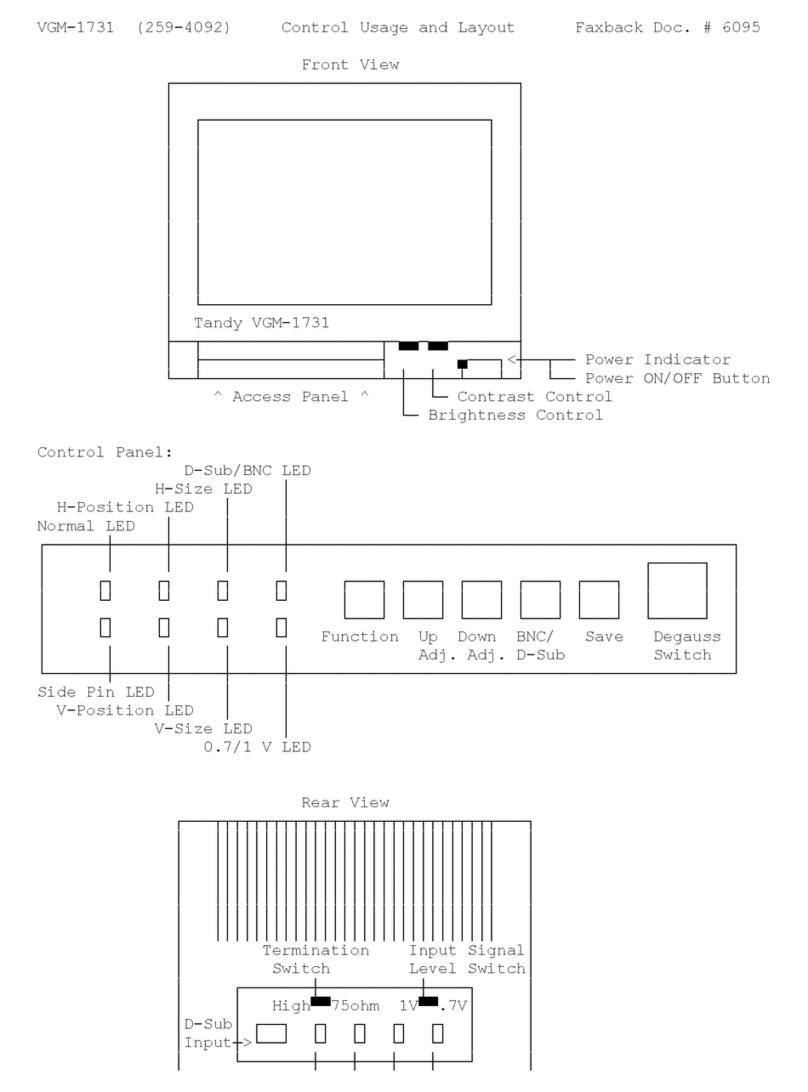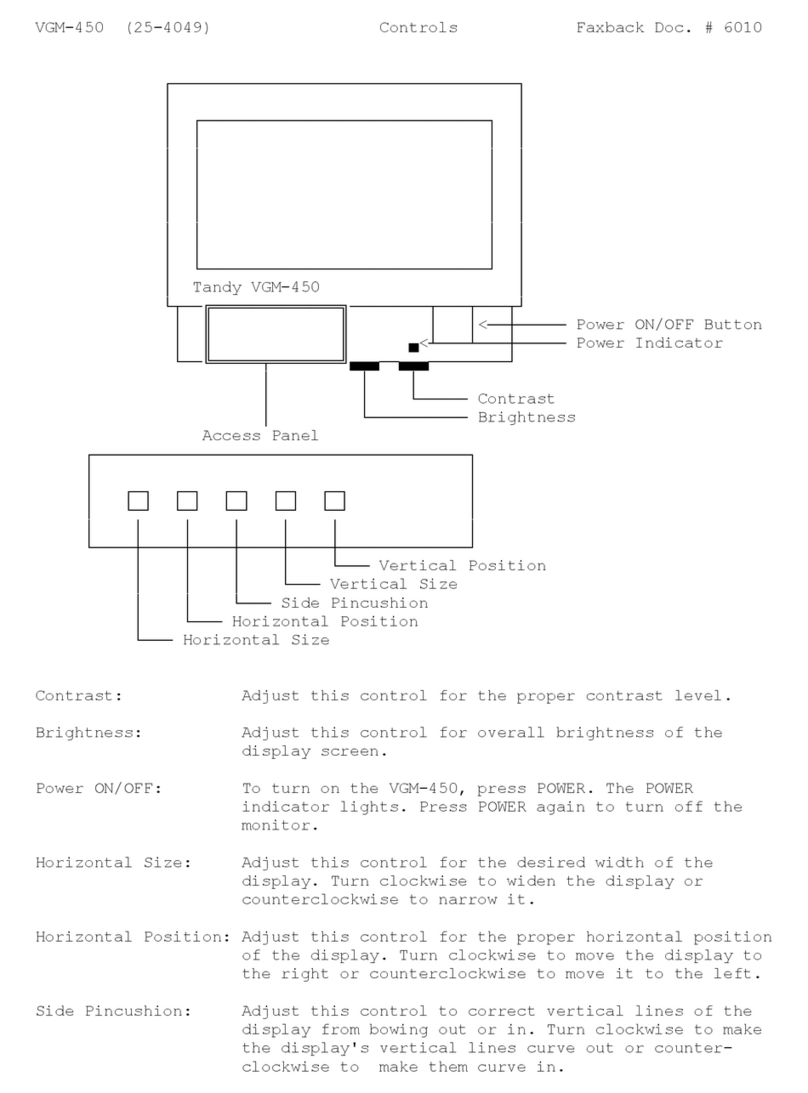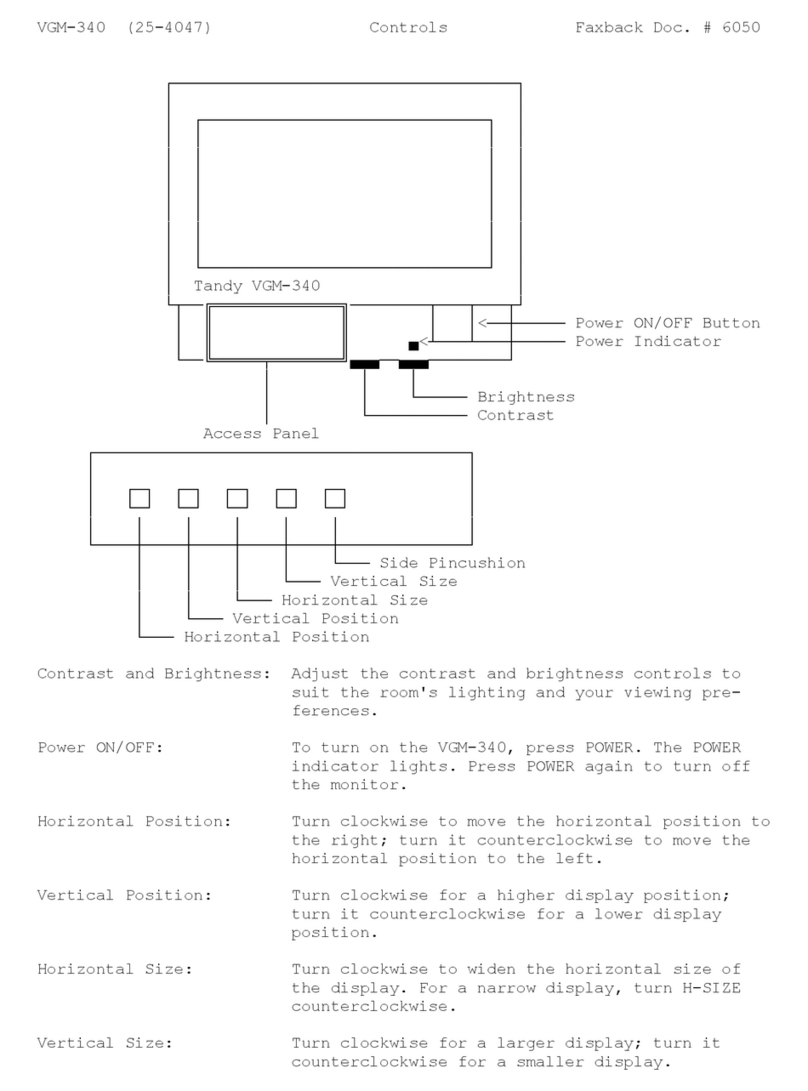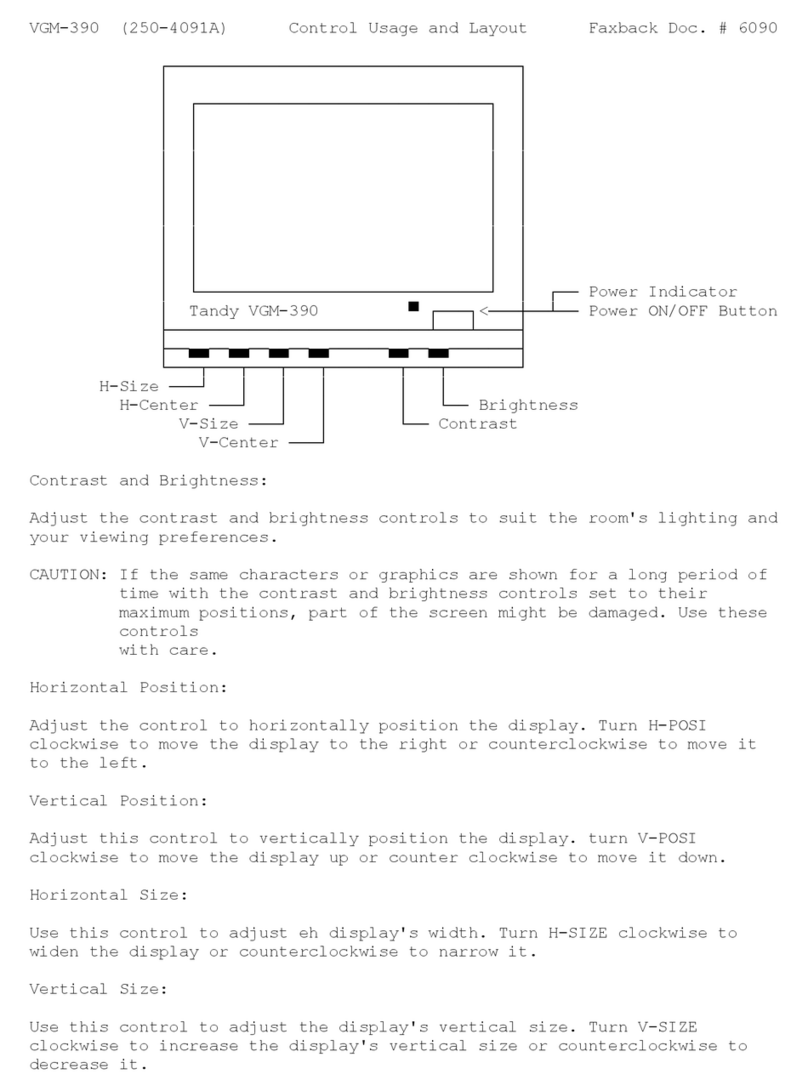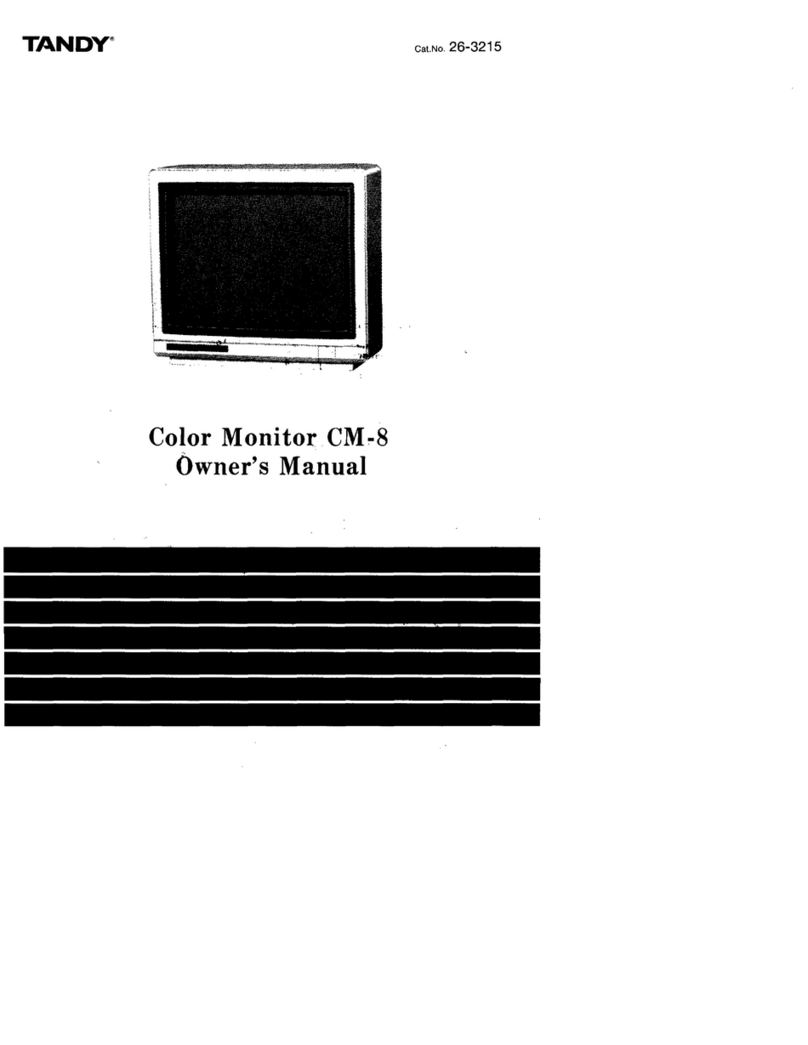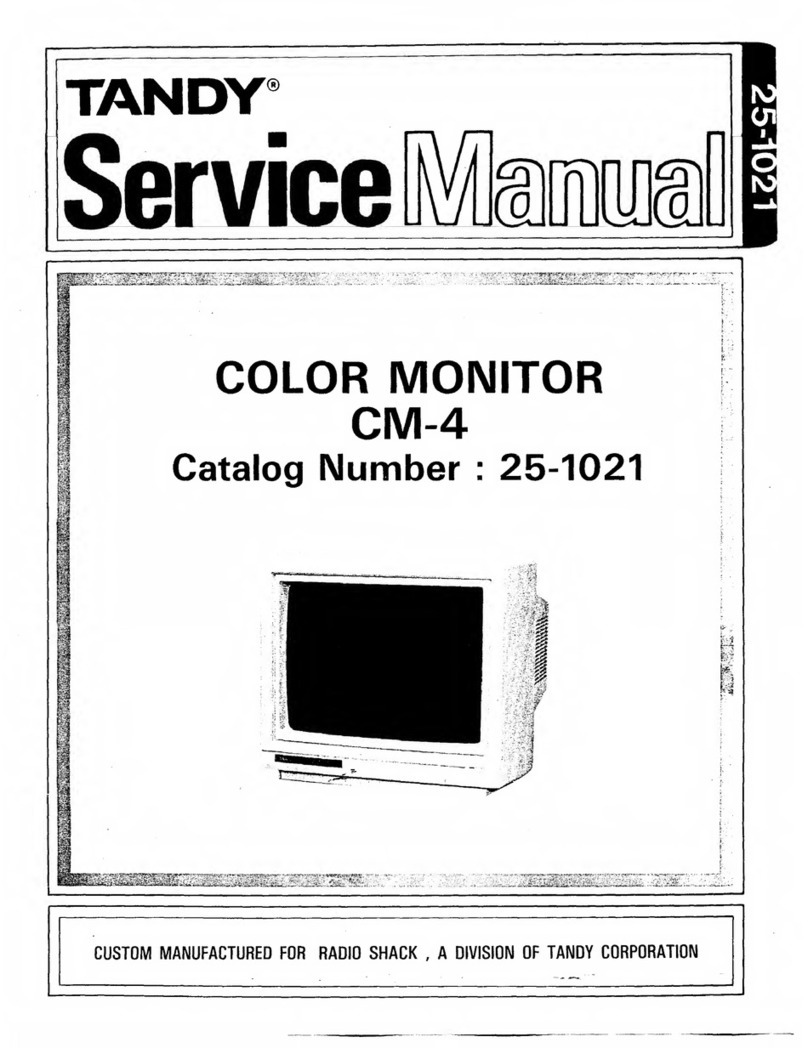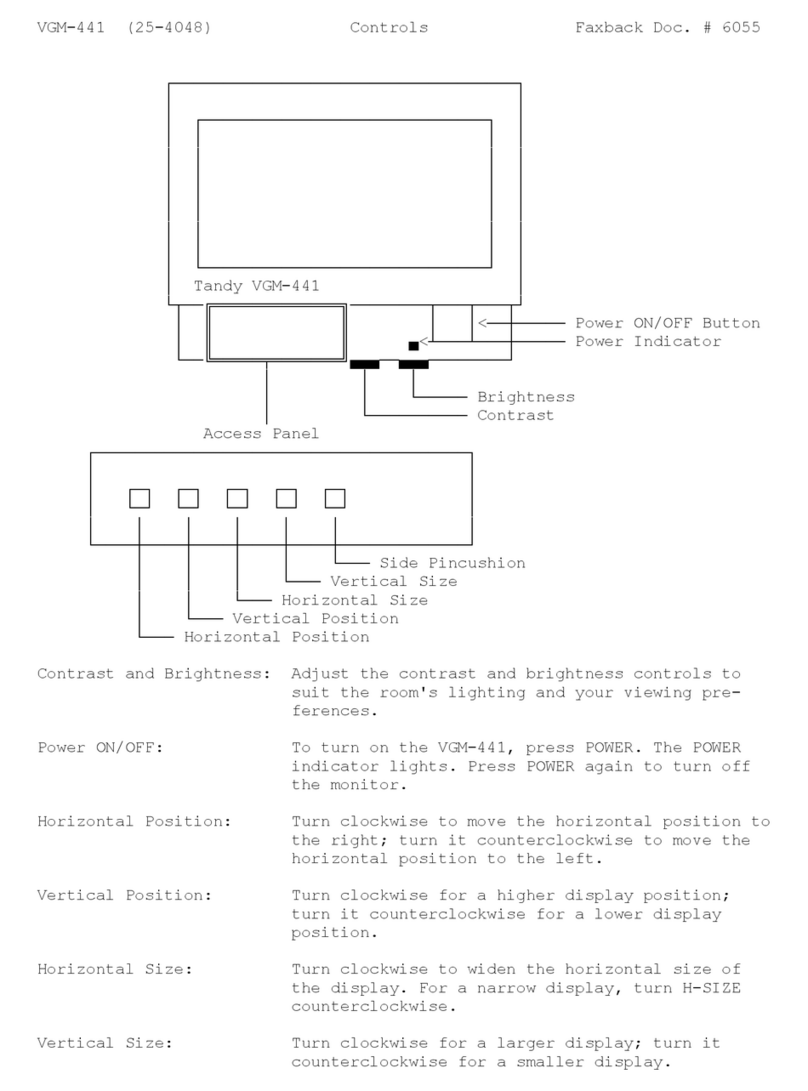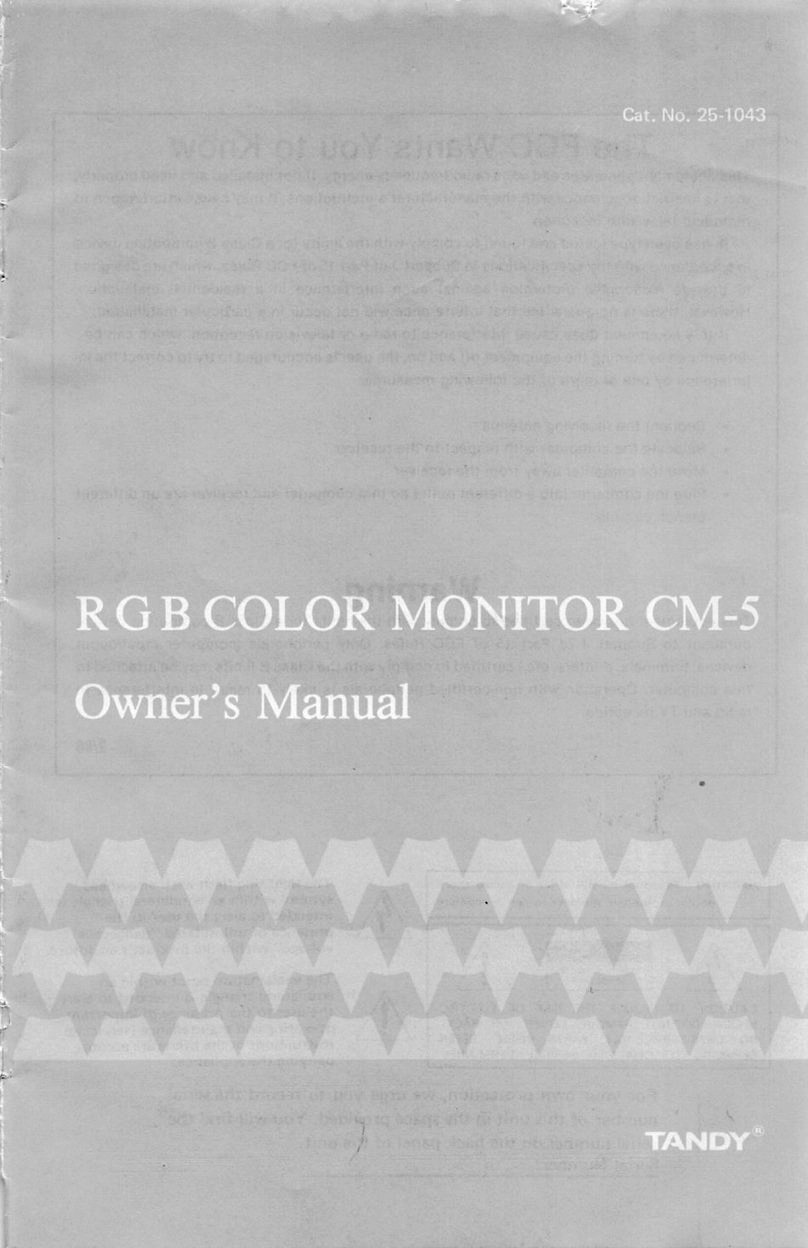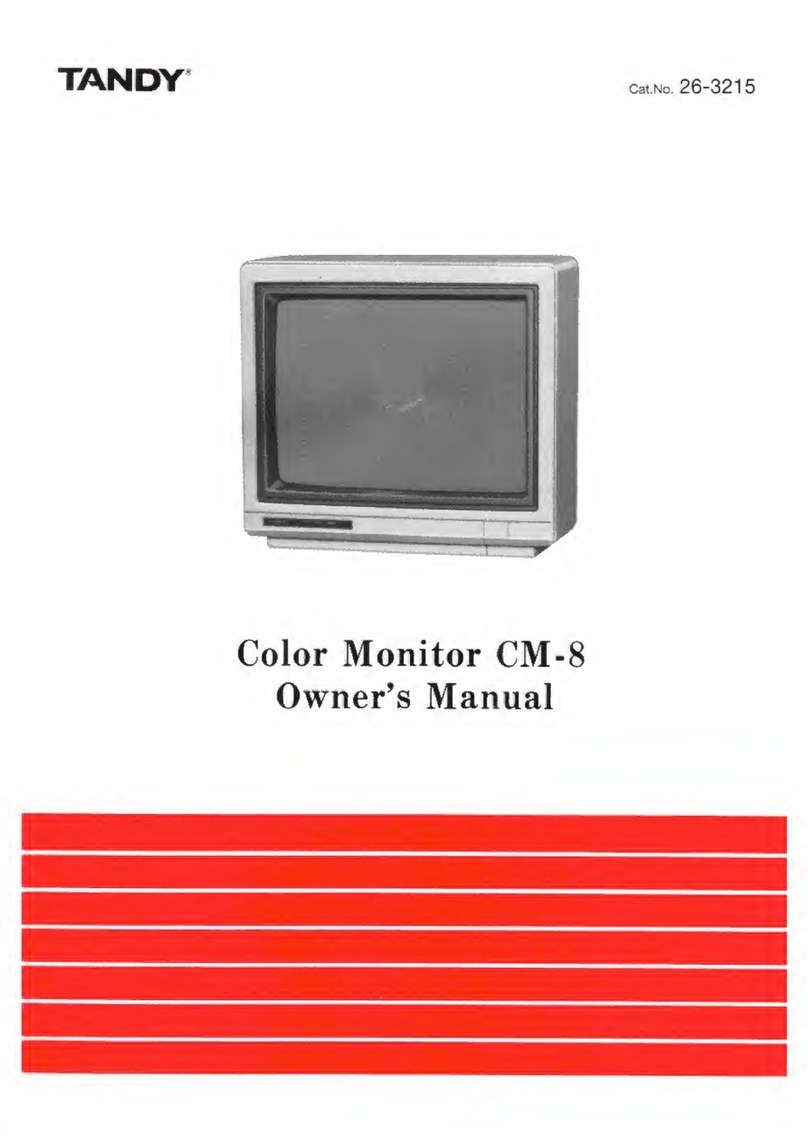CONTENTS
Page
SPECIFICATIONS
..
........ ..... .... .. ......
....
..
......... .......... ..
..
......
......
.
..
..
....
... .. ...........
..
....
..
..... ... 3
I
POR
TANT
SERVICE SAFETY PRECAUTIONS ............... .
......
....
.
..
....
....
.....
.....
..
............
.... .. 4
TH
EORY
OF
OPERATION
1.
RGB
Drive
Circuit
...
......
...
....
.......
.......
..... ..... .. ......
................
...
.....
.
..........
.
........
.. .
......
. 6
2.
Vi
deo (RGB)
Output
.. ..
.....
,. ...
........
..............
....
.
....
... .. .........
..
.........
....
.. ...
.....
.....
......
....
6
3. Vertical
Deflection
Circuit
.......
..
.......
....................
.......
...
....
.......
.. .........................
.....
. 7
4.
Horizontal
Oscillator, AFC and Drive
Circuit
...
.....
...
......
....
....
..
.....
....
....
..
........
......
........
. 7
5.
Horizontal
Output
and HV
Rectifier
......................
..
.
.....
.........
.....
...
.....
........
...........
....
.. 7
6.
High-Voltage
Shutdown
System
..
..
.....
.......... .. .... .
..
.
..........
.. ...... .........
.........
......
....
..
....
9
7.
Power
Supply
......
..
....
.....
...... ..... .....
....
.....
..
..... .. .
..
.. .......
..
.....
.
....
.
.....
..
....
...
.................
9
8.
Audio
Output
Circuit
.. .... .
....
.....
......
..........
..
..
.. ..
.......
........
..
....
.. ...
.....
......
....
............
....
12
DISASSEMBLY INSTRUCTIONS
.....
... ........ ... .........
..
.. .........
......
......... .. ..........
............
.....
..
..
13
BLOCK
DIAGRAM
.....
.......
.....
.....
........
.....
......
.......
...
....
..
.........
..
....
.
....
.. .. .......
....
.
......
....
......
14
AL
IGNMENT INSTRUCTIONS
1. B +
Power
Circuit
Adjustment
.......... ................................... ...... ... .. .... .. .. ...... .. .. ...... ....
16
2. Horizontal Hold
Adjustment
.............. .
..
..... ............ .......
..
..
..
.... .....
..
..
..
.... .. ....
..
.
..
...........
16
3. Vertical Size
Adjustment
....
....
.... .
..
............................ .......
........
.....
.......
.....
.....
.....
.... ...
16
4. Focusing ....
..
....... .... ........................................... .......
..
..
..
....... ......... .........
..
.
..
........ ... 16
5. High
Voltage
Check
... .
........
.......
..
......
......
......
........
..
......
.....
..
..............
...
...................
17
6. V
ertical-Linearity
Adjustment
.......
..
..... .
..
.... .....
..........
..
..........
.....
.......
..
....
.........
.. .........
17
7.
X-
ra
y
Protector
Circuit
Test
..................... ......... .. .......................
.......
.......
....
..
....
.........
17
. Color
Purity
Adjustment
............................................................................................. 17
9. Black and
White
Tracking
........................... .......... ..................................................... 18
0.
Static
(Center)
Convergence
............................................................. .......................... 19
. Dy
namic
Convergence
.......................................... ...........................................
..
........
20
OU
BLESHOOTING GUIDE
...........
.........
... .....
.....
.
.....
.................
.....
.......
....
..... ..
......
.........
21
I
RI
G
DIAGRAM
AND
PARTS
LOCATION
....
....
..... .. ..................
.....
.....
...
.....
.
......
....
........
..
25
I
TED
CIRCUIT BOARDS (Top and
Bottom
Views)
ain
PCB
...... ... ..
.........
........
...............
....
..
....
........
............
....
... .. .......
.....
...............
....
....
27
CRT
Socket
PCB ...........................................................................................................
28
L
ED
PCB
.............. .......
..
.... ..
.........
.
........
...... ..
..........
...... .... .. ....
.....
....
.......
............ ..
.......
28
CA
BINET EXPLODED VIEW/PARTS LIST
1.
Cabinet
Exploded
View
........... ..........
....
.......................................... ..
......
....
..
...
..
........
31
2. Cab
inet
Parts
List
......... ...... ..... .....
......
...................
....
..... ...
..
.. ........... ... ....
.........
.. .. .. ...
33
3. Electrical Parts
List
........
......
... .... ...
.......
..
....
........... .. ...... .
..........
.
..
....
......
.....
..
.........
....
35
SCHEMATIC DI
AGRAM
...... ... .. ....... ... .....
.......
.......... .. ....... ..... ......
.....
.
.................
... ......
....
. 47
AV
EFORMS ..
..
..
..
.........
.....
..........
....
.......
.....
.....
...
..
.. .... .. ....... ... ..
.....
...
.....
.....
........
.....
..... 50
SE !CONDUCTOR LEAD IDENTIFICATION .... .
..
............
.......
.... .. .
..........
...
....
.......... ..
..........
.
50
2

